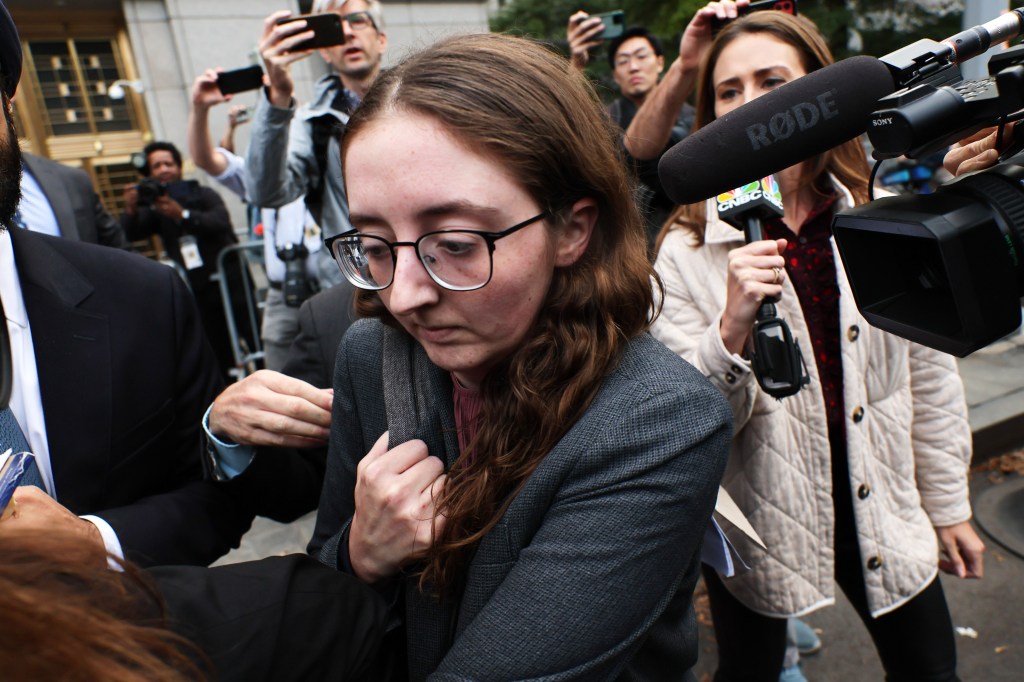The second week of the trial of former FTX CEO Sam Bankman-Fried provided further insight into internal practices at the crypto exchange, and one of the quotes of the trial so far.
Most of the week was taken up with testimony from Gary Wang, FTX co-founder and technology chief, and Caroline Ellison, former CEO of FTX’s sister company Alameda Research. In the first week of the trial, Wang had testified he had written code at Bankman-Fried’s request that allowed Alameda to access FTX customer funds.
Wang was asked about Bankman-Fried’s tweet issued just days before FTX filed for bankruptcy that said “FTX is fine. Assets are fine.” Responding to a question from the prosecutor, Wang said the tweet was “misleading” because it depended on how “assets” was defined, because when the tweet was posted, FTX did not have enough money to fulfil customer withdrawals.
He went on to say the value of an insurance fund designed to protect users from losses was often not enough to cover those losses. Its value, he said, was calculated by multiplying “the daily trading volume of the FTX token by a random number close to 7,500”. This seems a trivial detail, but to us here at GRIP it was a deeply shocking one and underlines just how rogue an operation FTX was.
Fraud and money-laundering
But the most eye-catching quote of the week came from Ellison, who took the stand on Tuesday and remained throughout the week. She admitted to crimes including fraud, conspiracy to commit fraud and money-laundering, and said Bankman-Fried directed her to carry them out.
When lender Genesis recalled $500m in loans to Alameda in June 2022, Alameda’s total liabilities were $14.9 billion, she said. Its net asset value was around $6 billion, but that was likely to have been inflated by the presence of FTX’s native FTT token, which could not be sold without impact on its market value.
Genesis asked to see Alameda’s balance sheet, a request that Ellison said left her feeling “stressed out”. To ease Genesis’s concerns, Ellison testified that she falsified seven different balance sheets until Bankman-Fried approved one to share.
“I didn’t want to be dishonest but I also didn’t want them to know the truth,” Ellison testified.
She went on to testify that “any major decisions” at Alameda had to go through Bankman-Fried.
“I didn’t want to be dishonest but I also didn’t want them to know the truth.”
Caroline Ellison, former CEO, Alameda Research
Ellison’s candid admission of guilt presents problems for Bankman-Fried’s defence team. She has said very clearly that he was, for the most part, fully aware he was crossing legal and ethical lines. “That’s a very hard witness to cross examine. Someone who admits their guilt and takes a counter to felony indictment and awaits sentencing and gets up and testifies,” former Assistant U.S. Attorney Kevin J O’Brien told crypto news site The Block.
The week’s other significant testimony came from BlockFi CEO Zac Prince, who blamed FTX for his own firm’s bankruptcy. By May 2022, BlockFi had over $1 billion in assets tied to FTX and Alameda. Questioned in court, Prince also said that BlockFi would not have lent money to Alameda if it had known that company was using FTX customer funds.
BlockFi bankruptcy
But Finance Magnets reports that a court filing submitted to the Committee of Unsecured Creditors in May states that BlockFi was aware Alameda was overexposed in August 2021, but that Prince allegedly dismissed the risks that were flagged.
Meanwhile Coindesk, which published the story that led to the eventual collapse of FTX, reported Monday that the company’s bankruptcy estate appears to be staking billions of dollars on the ether and sol crypto tokens. Over $155m looks to have been staked through blockchain addresses linked to the FTX estate.
The process of staking describes the locking of crypto holdings on a blockchain in order to “help maintain the network in turn of token rewards”, says Coindesk. The site estimates the move could generate over $9m annually. Attempts by the bankruptcy estate to recover investor funds look set to continue for some time to come.


